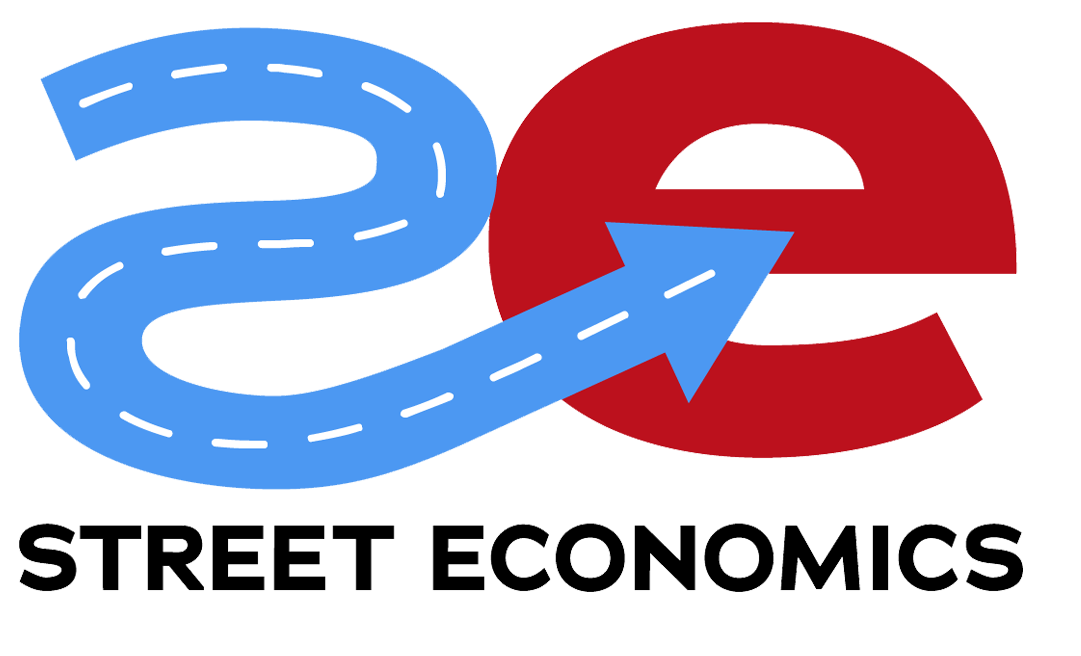Good morning, local leaders. This daily economic intelligence digest is crafted specifically for cities that reject outdated strategies, bureaucratic inertia, and yesterday’s economic development approaches. Realistic, actionable, and clearly stated, we’ll equip you to make proactive, informed decisions today.
Trump Hints at Tariff Relief, Markets Rally
President Donald Trump signaled a step back from his trade war escalations, saying tariffs on Chinese imports will be “substantially” below previously threatened levels. He also toned down attacks on the Federal Reserve, indicating he won’t try to oust Chair Jerome Powell after all. Investors reacted with relief: stock indexes jumped on Wednesday, recovering from last week’s steep losses when tariff threats and Fed turmoil had spooked markets. Businesses likewise breathed easier at the prospect that the White House may cool off its trade fight and let the Fed operate independently, at least for now.
Why This Matters: City economies have been caught in the crossfire of tariff battles. Local manufacturers and construction projects have been paying more for imported materials, and exporters have faced retaliation. A truce or even a slight easing in the trade war means less pressure on supply costs for everything from city infrastructure to small business inventory. Likewise, a calmer tone toward the Fed steadies the outlook for interest rates. That stability helps city budgets and local companies plan borrowing and investment without the whiplash of political interference. In short, less tariff tension and a respected Fed can translate into a more predictable economic climate on Main Street.
Home Listings Rebound as Sellers Cut Prices
New real estate data show the housing market finally shifting in favor of buyers. In March, the number of homes listed for sale jumped significantly from a year earlier, with all regions of the country seeing more inventory coming online. In fact, it was the busiest March for new listings in several years as more homeowners decided to cash out or move. With more choices on the market and mortgage rates still high, buyers are gaining leverage: 17.5% of home listings had price reductions last month – the highest share for any March in recent memory. Stubbornly high asking prices are starting to come down as sellers compete for wary buyers.
Why This Matters: Affordability has been a top concern for families in our cities. A rise in available homes and moderating prices is a welcome relief, potentially allowing more first-time buyers and working families to find attainable housing. For city leaders, this cooling market could ease some pressure to intervene with heavy-handed measures like price caps or rent control, since the market is naturally correcting. Instead, it is an opportunity to double down on pro-growth housing policies: streamline permits for new construction, encourage redevelopment of underused properties, and work with builders to keep the supply momentum going. More housing inventory and realistic prices will stabilize neighborhoods, grow the property tax base responsibly, and help retain talent in the community by making home ownership a bit more reachable.
Rents Keep Falling as New Units Open
After years of painful rent hikes, renters are finally catching a break. The median apartment rent has posted year-over-year declines for 20 straight months as of March 2025. Rents nationally are now a few percent below their peak in 2022 thanks to a boom in new multifamily housing construction. In many cities, developers have added a glut of new apartments, increasing competition for tenants and forcing landlords to temper rent increases or even cut rents to fill vacancies. Notably, larger units like two-bedrooms have seen the biggest price drops as new housing supply floods the market. However, industry analysts warn this renter’s relief may be temporary: a new 25% tariff on imported steel and aluminum is set to drive up construction costs for apartments, which could slow down new projects on the drawing board.
Why This Matters: Lower rents are good news for local residents struggling with the cost of living – more money stays in families’ wallets and consumer spending in the community. City leaders striving for affordable and attainable housing should welcome the market-driven price relief and recognize the cause: robust private investment in new housing supply. The key is to keep that momentum. With construction materials about to get pricier due to tariffs, cities need to cut any local red tape that adds extra cost to building. Fast-tracking permits and offering zoning flexibility for multifamily projects can help offset rising material prices. The goal is to ensure the pipeline of new housing stays strong so that rents remain in check. When the market is allowed to work – with developers confident they can build without undue hurdles – it expands housing options and keeps prices attainable, all without resorting to strict rent control that can scare off investment.
Office Vacancy Hits Historic High as Remote Work Persists
America’s downtown office towers are increasingly turning into ghost towers. A new commercial real estate report reveals the national office vacancy rate has blown past 19%, reaching levels not seen in nearly four decades. Major business hubs that boomed in the tech era are hardest hit: cities like San Francisco, Denver, and Austin are seeing roughly a quarter or more of their office space sitting empty. Office attendance has plateaued at roughly 50-60% of pre-pandemic norms as remote and hybrid work habits prove sticky. With many leases signed years ago now expiring, landlords are struggling to keep tenants, and distressed sales of office buildings are on the rise. In short, the pandemic shift in work styles has not reversed, and it’s creating a property market pile-up – big downtown buildings losing value and tax assessments heading south.
Why This Matters: For cities, half-empty office buildings aren’t just a skyline concern – they hit the budget and the business climate. When offices stay vacant, owners appeal their property taxes downward, squeezing city revenues used to fund services and infrastructure. Those empty floors also mean fewer commuters grabbing coffee, lunch, or happy hour downtown, which hurts small businesses and can make once-vibrant districts feel unsafe or uninviting. City leaders can’t afford to sit idle hoping the old normal returns. This is the moment to act decisively: repurpose and recruit. Loosen zoning to convert vacant offices into housing, hotels, or start-up incubators. Push banks and developers to restructure or buy distressed buildings and turn them into something useful. Market your downtown for what remote work can’t replace – in-person collaboration hubs, arts, entertainment, and experiences. The cities that cut through bureaucracy and reinvent their empty real estate fastest will preserve their tax base and breathe new life into their urban core, while those that delay will face prolonged blight and budget shortfalls.
Cincinnati’s New Housing Fund Triples Affordable Units
In Cincinnati, an experiment in public-private partnership is paying off big time in the fight for affordable housing. Two and a half years ago, the city decided to stop going it alone with its tiny housing trust fund and instead joined forces with county government and private investors. They created a pooled “fund of funds” managed by a local nonprofit development finance agency, leveraging the city’s few million dollars into a $70+ million loan pool for affordable housing projects. The result: Cincinnati is now on track to finance nearly three times as many affordable homes each year compared to what the city used to build on its own. By tapping outside capital and expertise, the city’s money stretches farther and projects get approved and built faster than under the old city-hall-managed approach.
Why This Matters: Every city talks about needing more affordable housing, but Cincinnati is actually doing it by embracing innovation over bureaucracy. Rather than wringing hands over budget limits or imposing new mandates on developers, they found a way to attract private capital to be part of the solution. The key insight for other local leaders is that you can multiply impact by partnering creatively: treat your limited public dollars as seed money to lure bigger investments from banks, foundations, and businesses that share the goal of housing attainable for all. By using a nimble nonprofit intermediary to cut through red tape, Cincinnati also sped up the timeline for projects. This approach safeguards property rights and investor interests (since loans are repaid and projects are economically viable) while still achieving public good. It is a sharp reminder that tackling housing affordability doesn’t require abandoning free-market principles – in fact, it can thrive on collaboration with the market. Cities that adopt this kind of model can break housing logjams without heavy-handed regulations, delivering results that benefit families and strengthen the community fabric.
GM Ramps Up Gas Vehicle Production as EV Plans Slow
In an eye-opening pivot, General Motors announced it is reallocating factory capacity back toward gasoline-powered trucks and away from some electric vehicle production plans. At a Toledo, Ohio plant, GM will boost output of transmissions for internal combustion engines – essentially doubling down on making parts for popular pickup trucks – and convert an EV component line to support this change. This comes on the heels of GM delaying the launch of certain electric models and missing its EV sales targets. Company officials claim the shift is due to market demand: truck buyers are still lining up for gas-powered vehicles in big numbers, while EV adoption, though growing, isn’t living up to the most bullish forecasts. Adding context, the move coincides with a new 25% tariff on imported autos announced by President Trump, which could make domestic-built gas vehicles more competitive or at least provides cover for automakers to refocus on their profitable conventional lineups.
Why This Matters: The drumbeat of “electric vehicles are the future” has been loud, but this development shows that the transition will be bumpier and more gradual than many expected. City and regional economies tied to the auto industry should take note. If you have auto plants or suppliers in your area, don’t assume gas-engine production jobs are disappearing just yet – in fact, they may stick around or even expand in the near term. Local workforce training programs should balance high-tech skills with traditional manufacturing expertise, because factories will need machinists and technicians for gasoline engines and transmissions for years to come even as they pilot EV lines. For city leaders, the takeaway is to stay agile and pragmatic: support innovation in EVs and green tech, but not at the expense of the industries currently underpinning your tax base. Sweeping bans on gasoline vehicles or aggressive local regulations might backfire if the market isn’t ready. Instead, focus on fostering a business environment that welcomes all advanced manufacturing, and let consumer demand drive the timeline. GM’s strategic reset is a reminder that free-market signals ultimately dictate which technologies take off – and right now the message is that conventional vehicles still have some gas left in the tank. Planning for your local economy’s future should be grounded in this reality.
Street Economics® is a community-focused economic intelligence service that cuts through the jargon and noise to help city leaders and citizens make sense of financial trends. It is like having a sharp econ advisor on call, translating global and national developments into local impact and action. With Street Economics®, you get timely insights, irreverent analysis (as you have seen), and practical takeaways for your community. In an era of information overload, we help you figure out what actually matters for your city’s budget, businesses, and families. Ready to make smarter decisions and drive your local economy forward? Check out Street Economics® at streeteconomics.ai and see how our daily briefings and tools can help your community thrive. Go ahead, join the movement, your city’s economic future will not wait.



Comments are closed